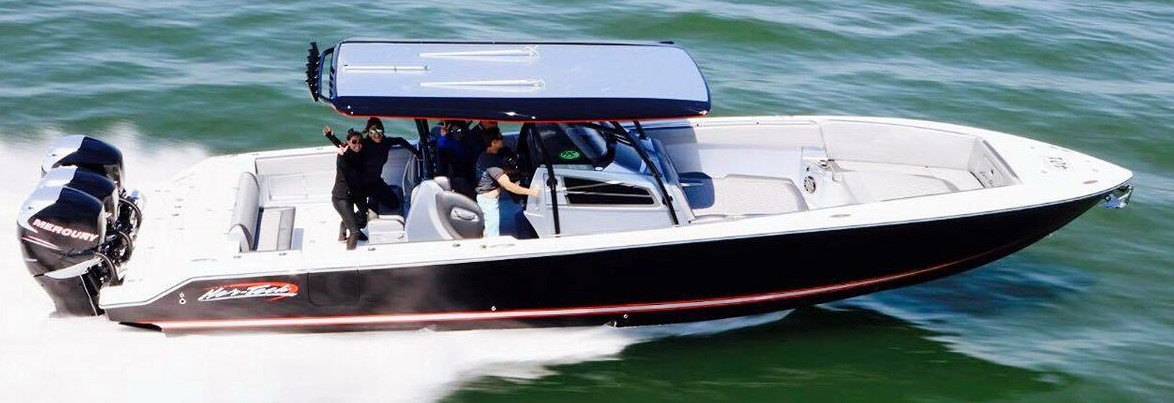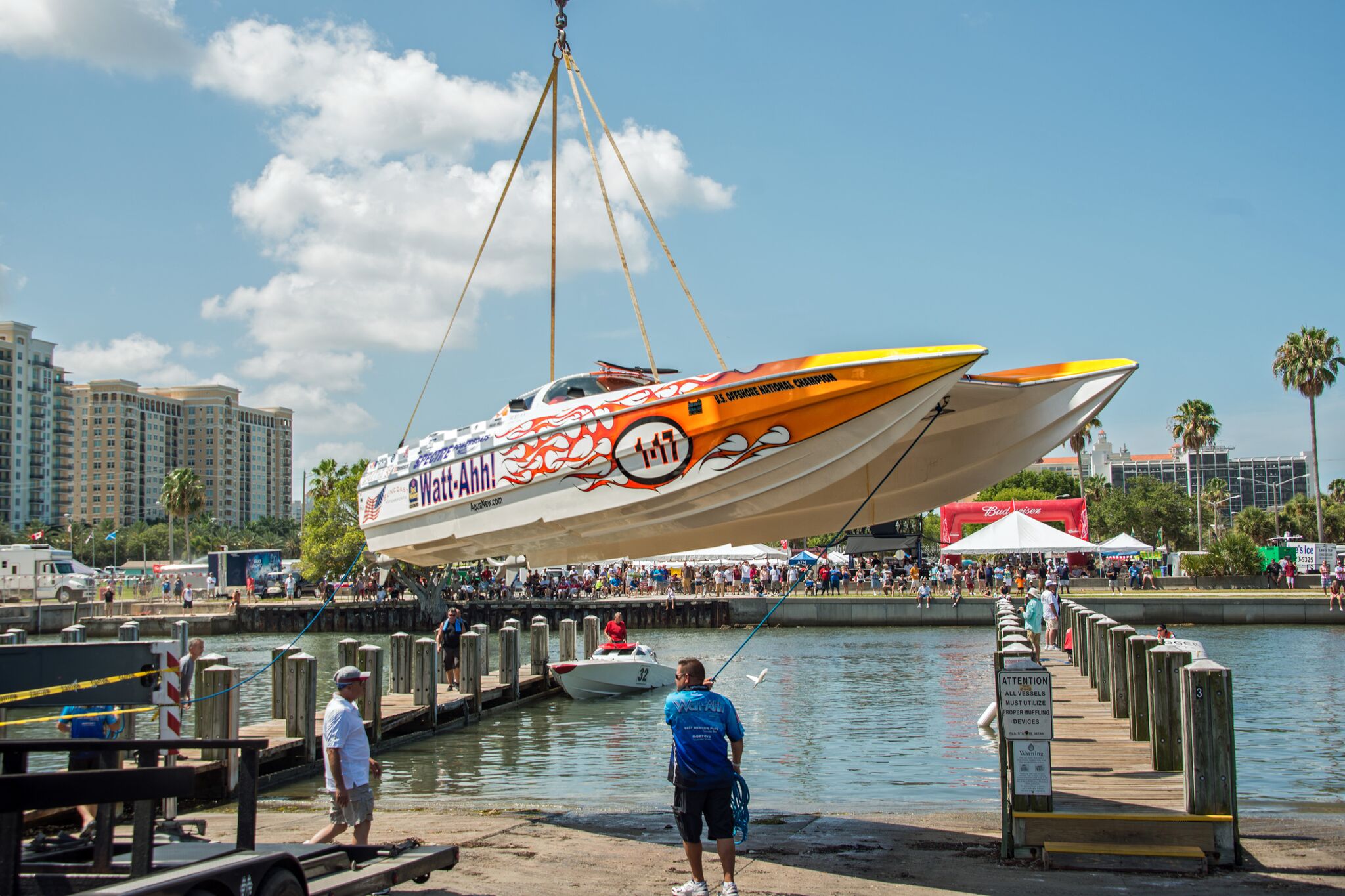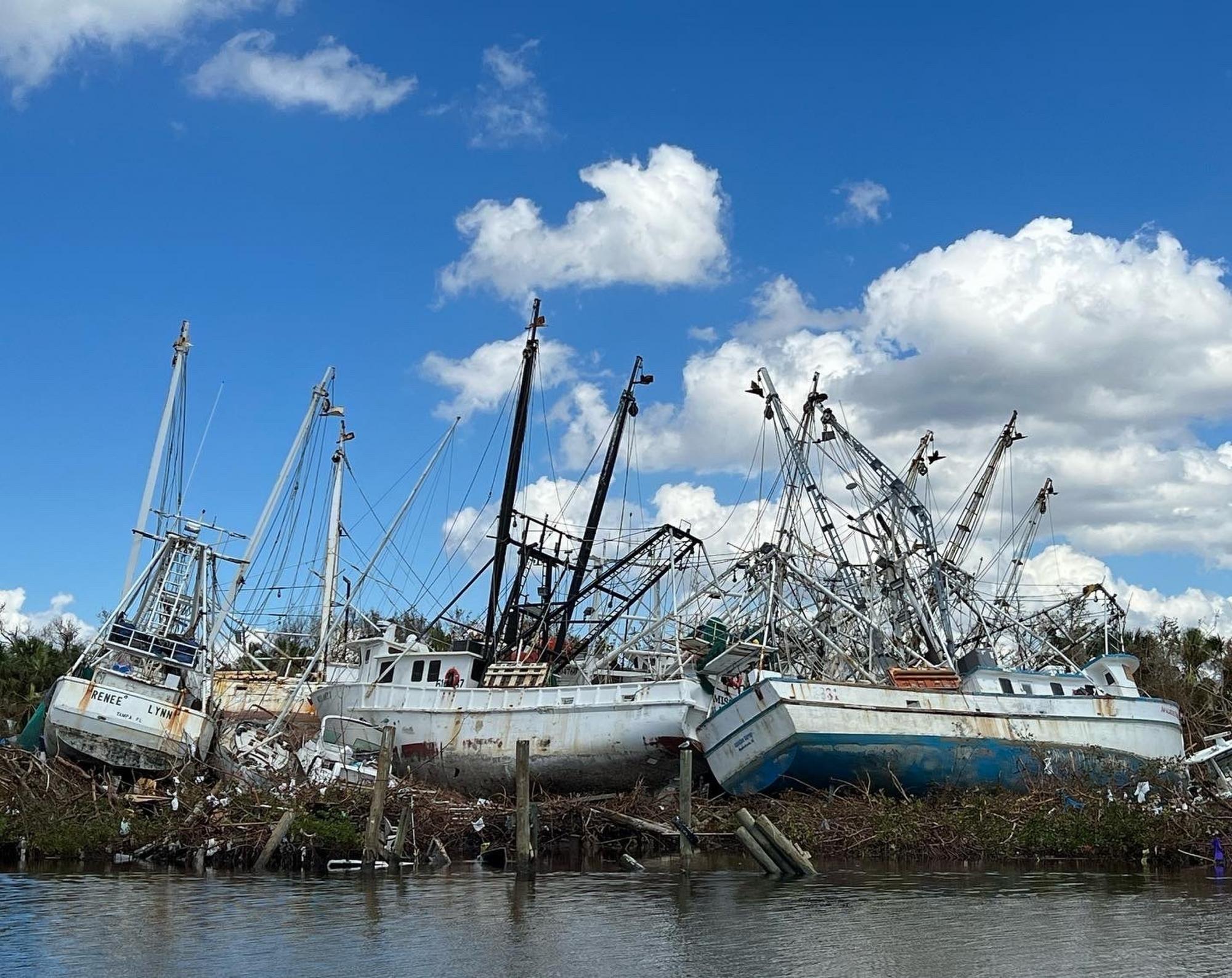What to Look for When Buying a Boat: Key Factors to Consider
Purchasing a boat can be an exciting yet daunting experience, especially for first-time buyers. With numerous factors to consider, such as boat type, new or used options, and budget, it's essential to approach the process with a solid understanding of what to look for when buying a boat.
Choosing the right type of boat is one of the most critical decisions to make based on intended use and personal preferences. Potential buyers should also determine whether to buy a new or used boat, as this decision can significantly impact not only their budget but also the overall ownership experience. Evaluating the boat's condition through a thorough inspection, conducting a sea trial, and obtaining a professional marine survey further ensures that buyers are secure in their investment.

Types of Boats
When looking to buy a boat, it is essential to understand the various types of boats available to choose the one that best suits your needs. The following types of boats are commonly sought after for recreational purposes.
Aluminum Fishing Boats are light, easy to transport, and rugged. They are popular among anglers due to their durability and low maintenance. These boats are well-suited for freshwater fishing and can handle various water conditions with ease. Discover Boating offers insight on the popularity of aluminum fishing boats.
Bass Boats are highly-specialized fishing machines, designed specifically for targeting bass species. They usually feature high-powered engines and a sleek, low-profile design to maneuver effortlessly at high speeds. These boats often come with advanced fishing technologies to enhance angler experience.
For those who enjoy relaxation and entertaining, Pontoon Boats are an excellent choice. These versatile boats offer ample deck space and comfortable seating options, making them ideal for cruising, watersports, and fishing activities. They are stable, easy to maneuver, and family-friendly.
For more adventurous individuals, Watersports Boats are designed for water skiing, wakeboarding, and wakesurfing. They are equipped with powerful engines, sleek designs, and specialized features like wake towers and built-in ballast systems which create the perfect conditions for thrilling watersports. Boats.com provides more information about these boats and their capabilities.
Center Consoles are versatile boats, suitable for both fishing and pleasure cruising. They typically feature an open deck layout and a central console, allowing anglers to move around the boat with ease. Center console boats can handle various types of waters, making them suitable for freshwater and saltwater use.
In summary, it is crucial to determine the purpose of your boat before making a purchase. Identifying the right boat type for your needs can significantly enhance the overall boating experience while maximizing your investment value.
New vs. Used Boats
When considering a boat purchase, one of the primary decisions is whether to buy a new or used vessel. Each option comes with its own set of advantages and challenges, which potential buyers should carefully consider before making a decision.
First and foremost, the cost is a significant factor. Used boats generally cost less than their new counterparts, making them an appealing choice for those on a tighter budget or looking for more boat features for their money. This reduced cost can also lead to lower annual ownership costs.
One of the benefits of buying a new boat is that they often come with warranties, providing peace of mind and financial protection if any issues arise during the initial period of ownership. However, used boats can still be reliable vessels if the buyer takes care to research the boat's history and consult a marine surveyor before purchase.
Furthermore, financing options might differ between new and used boats. As mentioned by Boater Pal, dealerships often provide easy financing for new boat purchases, whereas buyers of used boats may need to work out their own financing arrangements with third-party lenders.
Another consideration is the depreciation rate. New boats typically experience more significant depreciation in the first couple of years of ownership, while used boats have already undergone the initial depreciation, making them more likely to maintain their value over time.
When it comes to customization and personal preferences, new boats offer the advantage of being able to select specific features, materials, and color combinations. In contrast, used boat buyers may need to be more flexible or invest in modifications to achieve their desired boat aesthetics or functionality.
In summary, the decision between a new and used boat ultimately comes down to the buyer's priorities and preferences. Factors such as cost, warranties, financing, depreciation, and customization options should be carefully weighed to ensure a satisfying boat ownership experience.

Budget Considerations
When buying a boat, it's essential to assess the overall costs to ensure it fits within your budget. The cost of owning a boat typically runs at 15 to 25 percent of the boat's overall value, although this can vary depending on the size and complexity of the vessel (source).
Several factors contribute to the total cost of boat ownership, including:
- Initial purchase price (new or used)
- Financing and interest
- Registration, insurance, and taxes
- Maintenance and repairs
- Fuel and docking fees
Deciding whether to buy a new or used boat can significantly impact your budget (Discover Boating). New boats often come with warranties and modern features, while used boats can be more affordable and offer better value for your money.
Additionally, consider the width, or beam, of the boat as wider boats may require special permits for trailering on public roads, affecting your budget (Boat Trader). Generally, boats with a beam of 8.5 feet or less are easily trailerable without requiring additional permits.
Lastly, don't forget about the potential resale value of the boat when planning your budget. Boats that maintain their value over time can provide a better return on investment if you decide to sell in the future.
Boat Size and Functionality
When choosing a boat, size and functionality play crucial roles in determining the vessel that best suits your needs. It's essential to understand the purpose of the boat, as this will directly dictate the appropriate size and type.
For offshore fishing, a boat size of 30 feet or larger is recommended to handle bigger waves and offshore swells (Boatsetter). In contrast, smaller inshore fishing boats typically range between 15 to 20 feet in length (Boatsetter). If inshore angling is your preference, an 18- to 20-foot flats boat is suitable for fishing in shallower waters (Salt Water Sportsman).
Waterway characteristics also impact your boat size choice. Larger waterways require a slightly bigger boat with a deeper hull, while smaller waterways or shallow waters benefit from a smaller vessel (Discover Boating).
consider storage requirements when selecting a boat size; marina storage costs will likely be affected by boat size(Discover Boating). Another aspect to examine is the boat's functionality. Features such as seating capacity, storage compartments, and comfort-enhancing amenities contribute to the overall usability and satisfaction of the vessel.
- Seating capacity: Make sure the boat can accommodate the number of passengers you intend to carry frequently.
- Storage compartments: Adequate storage space enhances utility for fishing gear, water sports equipment, or personal belongings.
- Amenities: Depending on your intended use, amenities such as a bathroom, onboard entertainment system, or well-equipped galley may be important factors.
By carefully considering the size and functionality of a boat according to your intended use and preferences, you'll be making an informed decision that leads to greater enjoyment and satisfaction with your purchase.

Engine Types and Performance
When considering a boat purchase, it's important to understand the different engine types and their performance characteristics. Various engine types have specific advantages and drawbacks in terms of performance, fuel efficiency, and maintenance requirements.
One popular engine type is the outboard motor. These engines are mounted on the outside of the boat, typically on the transom, making them easy to access for maintenance and repair. Outboard motors are available in various sizes and power outputs, catering to different boat types and performance expectations. Some notable outboard motor manufacturers include Honda Marine, Mercury Marine, and Yamaha Marine.
Gas sterndrive engines, also known as inboard/outboard (I/O) engines, are another common option. These engines are partially mounted inside the boat, with the drive system protruding through the transom. Sterndrive engines provide a good balance of power, efficiency, and maneuverability but might be more complicated to maintain compared to outboard engines.
For those looking for increased fuel efficiency and power, diesel inboard engines offer a viable choice. These engines are mounted entirely inside the boat and are typically found in larger vessels. Diesel inboard engines generally provide longer range and more torque, although they can be more costly upfront and may require specialized knowledge for maintenance and repairs.
Jet boat and personal watercraft engines are unique in their design, utilizing waterjet systems instead of traditional propellers to propel the craft. These engines offer the advantage of shallow water operation and reduced risk of injury from propellers. However, they may require more frequent maintenance due to their complexity.
Performance boats, on the other hand, prioritize speed and agility. These vessels can be equipped with various engine types, such as inboard, outboard, or even multiple engines for increased power output. High-performance boats aim for maximum speed and often feature advanced hull designs, aerodynamic profiles, and lightweight construction materials. Popular brands in the performance boat market include Cigarette Racing, Donzi Marine, and Fountain Powerboats.
Hull Designs
When buying a boat, it's essential to understand the different hull designs as the hull shape greatly impacts a boat's performance, stability, and handling. The core categories of hull types are flat bottoms, deep-Vs, modified-Vs, and multihulls.
Flat Bottom Hulls: These hulls have almost no deadrise, which allows them to plane easily and offer a smooth, stable ride in calm waters. However, the flat surface makes them less suitable for rough or choppy water conditions as they can give a bouncier ride. Flat bottom hulls are popular among small boats and vessels used for fishing in calm and shallow waters. (source)
Deep-V Hulls: As the name suggests, these hulls have a V-shape from bow to stern that provides excellent stability and handling. The deep-V hull design allows the boat to cut through waves smoothly and efficiently while maintaining a comfortable and dry ride. This hull type is popular among offshore fishing boats and cruising vessels. (source)
Modified-V Hulls: This hull design is a hybrid version of the flat bottom and deep-V hulls. It features a flatter bottom near the stern, which transitions into a more pronounced V-shape towards the bow. Modified-V hulls offer a balance between stability, handling, and fuel efficiency. This design is common among small and medium-sized recreational boats. (source)
Multihulls: Catamarans and trimarans fall under the category of multihulls. They feature two or three individual hulls bridged by a deck that provides exceptional stability and reduces pitching and rolling. Multihulls are fast, fuel-efficient, and suitable for various purposes like pleasure cruising and offshore racing. (source)
In conclusion, hull design is a significant factor to consider when buying a boat. Each design serves specific purposes and has advantages and drawbacks depending on the intended use and water conditions. Understanding the different hull types can guide you in making an informed decision when purchasing the right boat for your needs.

Maintenance and Storage
When buying a boat, considering the maintenance and storage requirements is essential for ensuring the longevity and optimal performance of your investment. Proper maintenance and storage not only help in prolonging the boat's life but also save money by preventing costly repairs.
Regular upkeep of your boat includes cleaning the hull, inspecting the engine, checking belts and hoses for wear, and keeping the electrical systems in proper working order. Using boat-specific cleaning products is recommended to minimize environmental impact and avoid damage to the boat's surface (Boat Safe). Moreover, engine oil should be checked for grit, moisture, or metal dust, which may indicate potential problems (Family Handyman).
Additionally, it is crucial to plan for proper storage when the boat is not in use. There are various storage options available which cater to different types of boats and budget constraints. You can choose between dry storage at a marina, storing the boat on a trailer at home, or renting a storage facility.
Choosing the right storage option depends on factors such as the size of your boat, local regulations, and your budget. Regardless of your choice, it is important to ensure that your boat is protected from the elements, especially during the off-season, to keep it in good condition.
To summarize, paying attention to regular maintenance tasks and selecting the most suitable storage option for your boat will help maintain its value and functionality over time. This way, you can enjoy worry-free boating experiences and protect your investment.
Warranty and Insurance
When buying a boat, it is crucial to consider warranty and insurance aspects as they play a significant role in protecting your investment. Understanding the specific terms and coverages in these areas can help you make an informed decision when purchasing a boat.
A boat warranty typically covers the hull, engine, and other components. Some warranties are pro-rated, meaning the coverage diminishes over a set period of time. For example, Sea Ray's hull blister warranty is pro-rated on a five-year schedule (Boating Mag). It is essential to check what the warranty covers and how labor is covered, as this can vary between manufacturers.
Boat insurance is vital in protecting your investment and is required in some states. Only Arkansas and Utah mandate boat insurance; however, specific coverages differ in each state (The Balance). Arkansas requires at least $50,000 of liability insurance for boats powered by engines over 50 horsepower, while Utah's requirements are $25,000/$50,000 for bodily injury/death coverage for boats with engines over 50 horsepower (Forbes Advisor).
Insurance premiums can be affected by factors such as the size, value, type, and age of the vessel (boats.com). Additionally, yacht policies often have a percentage of the insured value as a deductible. For instance, a 1% deductible on a boat insured for $100,000 would have a $1,000 deductible (Discover Boating). It is crucial to research different insurance options and choose the best policy that meets your needs and budget.
Test Drives and Inspections
When buying a boat, conducting test drives and thorough inspections is a critical step. A sea trial, or test drive, will evaluate the boat's performance, while inspections focus on the vessel's exterior, interior, and mechanical components.
The sea trial allows the buyer to experience the boat's handling, speed, and overall performance. It's essential to pay attention to these factors during a test drive to ensure the boat meets your expectations and requirements.
During the inspection process, examine the following areas:
- Exterior: Check the hull, keel, deck, helm station, hull-to-deck joint, and molding trim for any signs of damage or wear. Ensure the structures are in good condition.
- Interior: Assess the living spaces, including the head, the galley, and sleeping quarters. Check for proper ventilation, lighting, and storage spaces.
- Systems: Test all electrical, plumbing, and mechanical systems. This includes gauges, running lights, the head, and fresh and raw water systems.
- Engine: Inspect the engine, belts, and hoses. Look for signs of deterioration, fraying, or cracks, and test the propulsion system to ensure it runs smoothly. In the case of a larger boat, you may want to hire a boat engine mechanic to examine the engine or conduct a fluid analysis test.
It's essential to document any defects or issues found during the inspection and test drive. Addressing these concerns before closing the deal will help you negotiate a better price and avoid costly repairs later on.
If necessary, consider hiring a professional marine surveyor to perform a comprehensive evaluation of the vessel. They will provide a detailed report of their findings and can help you make an informed decision on your purchase.
Conclusion
When buying a boat, it is crucial to consider various factors to ensure a smooth and enjoyable experience. Begin by understanding your needs and preferences, such as the boat size, type, and intended use, as well as your budget. It's essential to research boat listings, attend boat shows, and work with brokers to find suitable options.
Inspect the boat thoroughly by examining its drive belt, serpentine belt, potential water damage, and overall condition. According to Boatsetter, it is essential to check for water damage and oil contamination, as these issues might indicate deeper problems. The Yachting Monthly also suggests consulting experts and considering essential factors like the boat's age and history to avoid potential pitfalls.
Lastly, ensure that you can manage the legal requirements for transporting your boat on public roads. A boat with a beam width of more than 8.5 feet might require a special permit or have limitations according to Boat Trader's Ultimate Boat Buying Guide.
Taking time to research, inspect, and understand the necessary factors when buying a boat will help ensure a successful purchase and years of enjoyable boating experiences.
Charlie is Editor-in-Chief of Sea Magazine